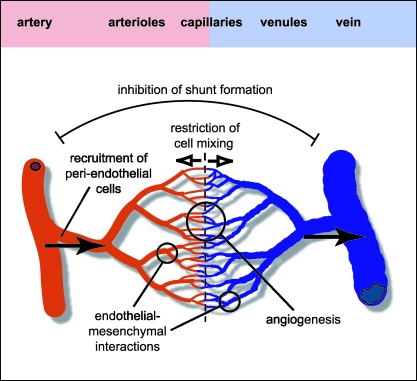Fig. 1.
Organization of the arterial–venous network. Distinct molecular AV identity could play various roles during early vascular morphogenesis. Repulsive cues (open arrows) provided by Eph/ephrin signalling and other pathways might restrict cell movement across an AV boundary and inhibit the formation of shunts between large-calibre blood vessels. Formation of capillary beds by angiogenesis might be stimulated at the AV interface. Distinct molecular properties of arteries and veins could contribute to the recruitment of pericytes and vascular smooth muscle cells, and perhaps mediate specific interactions between endothelial cells and the adjacent mesenchyme. Haemodynamic factors are also likely to contribute to AV differentiation (arrows indicate the direction of blood flow).

